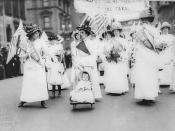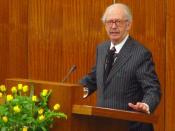I'm a student currently studying women's issues. And today I'm going to present you with what I have found out on feminism during the 1960's. The Women's Liberation Movement of the late 1960s was known as the second wave of the feminism movement. It unleashed great interest in the history of women's resistance to male domination. Especially after world war 2 as more women recognised their real value.
Although the women's liberation movement began among us as young women students and professional women, the demands it raised, combined with the growing contradictions within the capitalist system, began to mobilise much broader layers. It began to affect the consciousness, expectations, and actions of significant sections of the working class. Leading more women to recognize their lack of rights and gender-discrimination present in society.
Women have demanded affirmative action programs to open the doors previously closed to women in all arenas, and overcome the legacy of centuries of institutionalised discrimination.
They have insisted upon their right to participate with complete equality in all forms of political, social, economic, and cultural activity, equal education, equal access to jobs, equal pay for equal work. What I've also studied is that at the very centre of the women's liberation movement has been the fight to decriminalise abortion and make it available to all women. The right to control their own bodies, to choose whether to bear children, when, and how many, is recognised by millions of women as an elementary precondition for their liberation.
As a student, I also see the extreme unfairness in education as males often receive better opportunities in studying. Society's attitudes forced women to think that getting married is their main ambition; therefore, education is not important. But the truth is, women are as capable as men to study and to...


